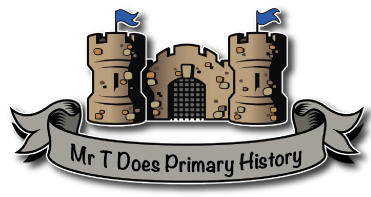Pupils should develop an awareness of the past, using common words and phrases relating to the passing of time. They should know where the people and events they study fit within a chronological framework and identify similarities and differences between ways of life in different periods. They should use a wide vocabulary of everyday historical terms. They should ask and answer questions, choosing and using parts of stories and other sources to show that they know and understand key features of events. They should understand some of the ways in which we find out about the past and identify different ways in which it is represented. In planning to ensure the progression described above through teaching about the people, events and changes outlined below, teachers are often introducing pupils to historical periods that they will study more fully at key stages 2 and 3.
In Key Stage 1, the National Curriculum is broken into the following areas:
- Changes within living memory. Where appropriate, these should be used to reveal aspects of change in national life.
The important aspect here is to study changes within living memory. It’s the perfect opportunity to build community links by using the school’s locality and oral history from community leaders and family members. Living memory is an approximate duration of 80 years – not just the child’s lifetime!
– Toys (the increase in electronics and computer use alongside some continuities).
– Homes (the external and internal makeup).
– Shops and shopping (the decline of the high street, internet shopping, growth of supermarkets).
– A study of how life has changed by comparing various aspects the child is familiar with to that of a parent and grandparent.
- Events beyond living memory that are significant nationally or globally.
This is a single event that is important to the country or world as a whole. It should be beyond living memory so over 80-100 years in the past. It’s a perfect opportunity to compare a national event and a similar one that has taken place in the school’s locality where possible.
– The first flight
– The introduction of the railways
– The great fire of London
- The lives of significant individuals in the past who have contributed to national and international achievements. Some should be used to compare aspects of life in different periods. This is the perfect opportunity to add in an element of diversity
Individuals to consider:
– William Caxton and Tim Berners Lee based around the changing way we communicate.
– Amy Johnson, Ibn Battuta, Edmund Hilary around the theme of explorers.
– Isambard Kingdom Brunel and George Stephenson around the inventors and engineers that shaped Britain.
It’s even better if you can tie in an individual from your locality!
- Significant historical events, people and places in their own locality
This obviously depends completely on your locality but contacting local history groups and speaking to community leaders is a good place to begin – their wealth of knowledge is incredible!
Some suggestions to consider:
– Your school building (when it was built, people that have been to it and how it has changed).
– Significant people that have something named after them (a park, a building, a street etc).
